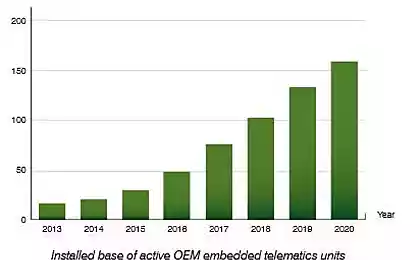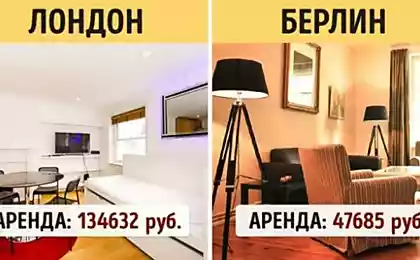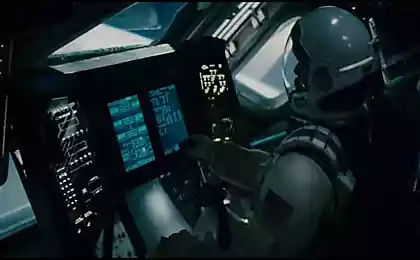1364
V2V, V2I, technology and possible future road transport
«If I had asked people what they wanted, they would have asked for a faster horse» i>
Henry Ford on the analysis of customer requirements
Modern car thing is pretty conservative in its basic characteristics. Despite numerous electronic bells and whistles it remains a means of transportation increased risk controlled exclusively in manual mode using the strange biological processor, located between the steering wheel and driver's seat. But times change, and technological advances in recent years, serious props shaky Plotinka common sense. So what can we expect from the industry in the next five years?
Auto Transport h4> About Google initiatives everything, of course, know. Lupasty avtomobilchik with wildly rotating camera on the roof quite successfully cope with the task of automatic driving on the test track. In the city it is not yet allowed, but not because of the inefficiency of the "iron", but because of problems with the law, protect human life and health. But all in the automotive industry are well aware that the output of the automatic transport on the road just a matter of time. Experts called in 2020, and in the way of that date, not the technology, but only and exclusively by the law. Well, quite understandable fear of the terrible killer robots controlled by hackers, sociopaths :)
Experts GM see the following steps on the way to the automatic operation of the vehicle, many of which have already become a reality:
Update driver without interception management Interception emergency management Ability to restrict the transfer of control (automatic mode) Ability to complete transfer of control initiative driver Fully automatic car Application of automatic transport provides many benefits: comfort, reducing congestion, safety, energy efficiency, etc. The problem is that the use of automatic transport for the end user now is not obvious. And while there are many unsolved problems. As an automatic car behaves on the freeway, crowded "normal" car? As usual drivers will react to the maneuvers automatic car? What should be done to all on the road was good and safer? Technical experts in one voice say so far only one thing - to start, it is desirable that all vehicles on the roads have been associated with each other data network.
Related cars h4> Modern communications V2V (vehicle - a car) are based on standard technology DSRC (Dedicated short-range communications ) aka IEEE 802.11N, well-proven in the systems of electronic toll collection. Experiments show that the vehicle on which the equipment is installed V2V with built-in antenna, can keep a confident relationship with other cars within a radius of 800 m. With stationary objects (V2I) - up to 1000 m.
Antennas for outdoor installation, for installation on the windshield and for flush mounting in the car i>
The antennas are connected to the on-board equipment, which also can be connected to sensors of the car via standard bus (CAN, etc.)
On-board and roadside equipment DSRC i>
As a result, we have a certain number of data sources, automotive telematics, which may include a vehicle position based on GPS, data odometer, accelerometer, signs of inhibition, the data from other sensors, as well as data received from other vehicles chain. Immediately the problem:
The lack of standards V2V application layer. In the American working group IEEE 1609 and in the European working group TC204 yet developed standards at lower levels. Applied topics in the field of V2V is at the design stage. Issues of privacy and protect the system from deliberate manipulation (which is under intense high-speed fraught) When a large gathering of related car holds avalanche increase the amount of input data for analysis, which leads to errors and brakes onboard devices. Has not been fully worked out ways to effectively filter data without compromising the basic management scenarios. Why DSRC? H4> Firstly, currently debugged technological basis, the OSI model worked out up to the application layer. Developed protocols, including high-level. Applications, streamlined and standardized at the moment in Europe following:
Charging (ISO 14906). During the passage of the car under the antenna organized a secure channel of communication and transaction forms of travel - a data structure that is sufficient for the calculation of the amount of payment and withdrawal of funds. Control of execution of the rules of charging (ISO 12813). The same as that of payment, the only other crypto keys and other information from an onboard device. For example, the license plate, number of axles, information about the contract, the history of changes of signal levels, the quality of communication log, etc. (Fields can be selected) Help in positioning (ISO 13141). During the directions in the field of the antenna DSRC onboard memory device identifier recorded antenna and additional information about its location. A very useful feature for applications where rely on GPS data can not, but you need to get the information that the vehicle has traveled in a particular place - in tunnels, mountain serpentines, in complex interchanges.
DSRC device using licensed spectrum, dedicated to the needs of road safety. Protocol designed to work at high speeds (the device wakes up and quickly establishes a connection), meets all the requirements for information security and works well in a multiple input sources, which is commonplace in traffic.
The range of DSRC. The needs of V2V selected service channel 172. I>
Applications V2V and V2I. A little bit of science fiction h4> As part of the short notes difficult to adequately cover the topic of opportunities that offer "smart" cars. Now the machine is equipped with radar, it seems somehow alien miracle, to say nothing of a truly connected cars. But no harm in dreaming, and then I will list the applications and services that experts are developing now and that we will see on the roads within the next five to seven years.
Of particular importance is safety. Just specify theorists still do not know really what to do in a situation when on the road side by side automation-related and conventional cars. Therefore, the service provides a significant (or suppress) the superiority of related cars on the road.
Security Services V2V (vehicle - car)
Avoid a collision with a car in front of the following Electronic brake lights. Sharply decelerating car signals the emergency brake application, all approaching from behind an alarm or automatic failover. Now there is a similar system using flickering "stoparey" and the optical sensor Warning about the car in the blind spot. Now there are analogues based radar Help with changing lanes. Similarly, the blind spot, but with plenty of options. LED indicates that the changeover safely Warning of the danger of overtaking (see. Figure below) Warning of possible collisions at intersections (on stands demonstrate the script exit onto the main road in a limited review) warning on an opposite movement The cooperative adaptive cruise control (aka «train») Truck warns about to go on about the dangers of overtaking passenger car such a maneuver. i> Developed a range of services V2I (vehicle - road infrastructure) regarding traffic signalization, warning of adverse weather conditions, road works, trains at the crossing, etc. On the commercial services V2V and V2I need to talk separately and to devote a separate note.
In an ideal world, all of the above is quite viable. But in reality, the bright picture darken "neprodvinutye" cars moving along the same road, "neprodvinutye" motorcyclists and proud owners of mopeds, horse-drawn carts and bicycles. Engineering and expert community currently saves experimental basis and develops complex deployment scenarios technologies V2V, which would get at least a few real benefits from well controlled technological backgrounds. We're with you is breathlessly follow the development of this direction. Maybe even take part in its development.
Source: habrahabr.ru/post/237447/
China has developed the world's most accurate face recognition system and build on its basis the payment system
Quadrocopter starred in Cirque du Soleil and the PTI Zurich























